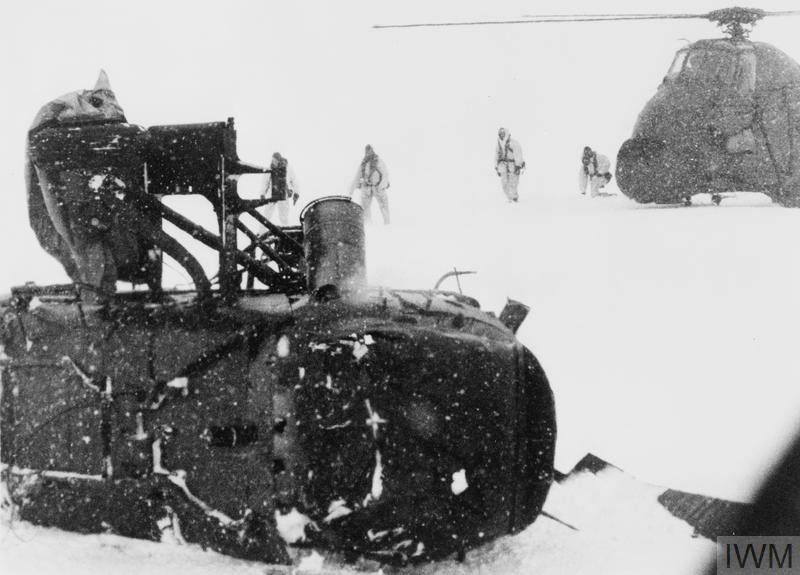The situation for British troops out on the Fortuna glacier of South Georgia early on the morning of Thursday 22 April 1982 was becoming ever more dangerous as gale-force winds and driving snow continued to rage around them.
It was no place for helicopters to be flying – but the Fleet Air Arm were prepared to give it a go.
Two Westland Wessex HU 5 helicopters from 845 Naval Air Squadron, operating from tanker RFA Tidespring, and a Westland Wessex HAS 3 of 737 NAS (HMS Antrim’s Flight), flew to the glacier, slowly edging their way through the atrocious conditions.
Having failed to locate the special forces, the helicopters returned to their ships to refuel, then returned to the glacier and made contact with the stranded troops.
All three aircraft landed and picked up their passengers, but I whiteout conditions both of Tidespring’s helicopters crashed – the first British losses of the Falklands campaign.
The first flew into the ground when the pilot became disorientated in the blizzard, so its passengers scrambled onto the remaining two aircraft.
But the second Wessex clipped a ridge as it flew out, leaving Antrim’s helicopter (Humphrey) to return to the destroyer with its passengers alone.
Later in the day Humphrey returned to the glacier once more to pick up the remaining men – fortunately there had been no fatalities in the crashes, which happened at relatively low speeds, though there were injuries.
Despite being overloaded, the pilot – Lt Cdr Ian Stanley – successfully made the flight down the glacier and made an emergency landing on Antrim’s flight deck. He was subsequently awarded the Distinguished Service Order for his efforts.
Frigate HMS Brilliant was immediately detached from the Advanced Group, which was heading south to the Falklands; the Type 22 instead made her way to South Georgia to join Operation Paraquet, crucially adding her two Lynx helicopters to the campaign, replacing the two lost Wessexes.
On the same day, 22 April, a small group of SBS troops were flown to Hound Bay, west of Grytviken, by one of HMS Endurance’s Westland Wasp helicopters, but scientists of the British Antarctic Survey told the men that they had seen no Argentine forces in the vicinity.
The SBS team then settled in to await reinforcements the following day – but this initiative ended soon after in poor weather with no advantage having been gained.
Today’s image from the Imperial War Museum collection (© IWM FKD 53) shows one of two Westland Wessex HU 5 assault helicopters from 845 Naval Air Squadron, operating from RFA Tidespring, that crashed while taking off in a blizzard on the Fortuna Glacier, South Georgia on 22 April 1982. The IWM has more than a million items telling the story of modern wear and conflict, collected by the museum since 1917. See https://www.iwm.org.uk/collections
* These posts can only give a brief sense of what was a complex and fast-moving situation 40 years ago, and cannot cover the involvement of every ship, squadron and unit in detail – for a much more comprehensive account see naval-history.net at https://www.naval-history.net/NAVAL1982FALKLANDS.htm
